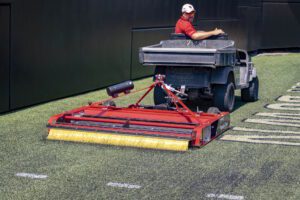Synthetic Turf Maintenance
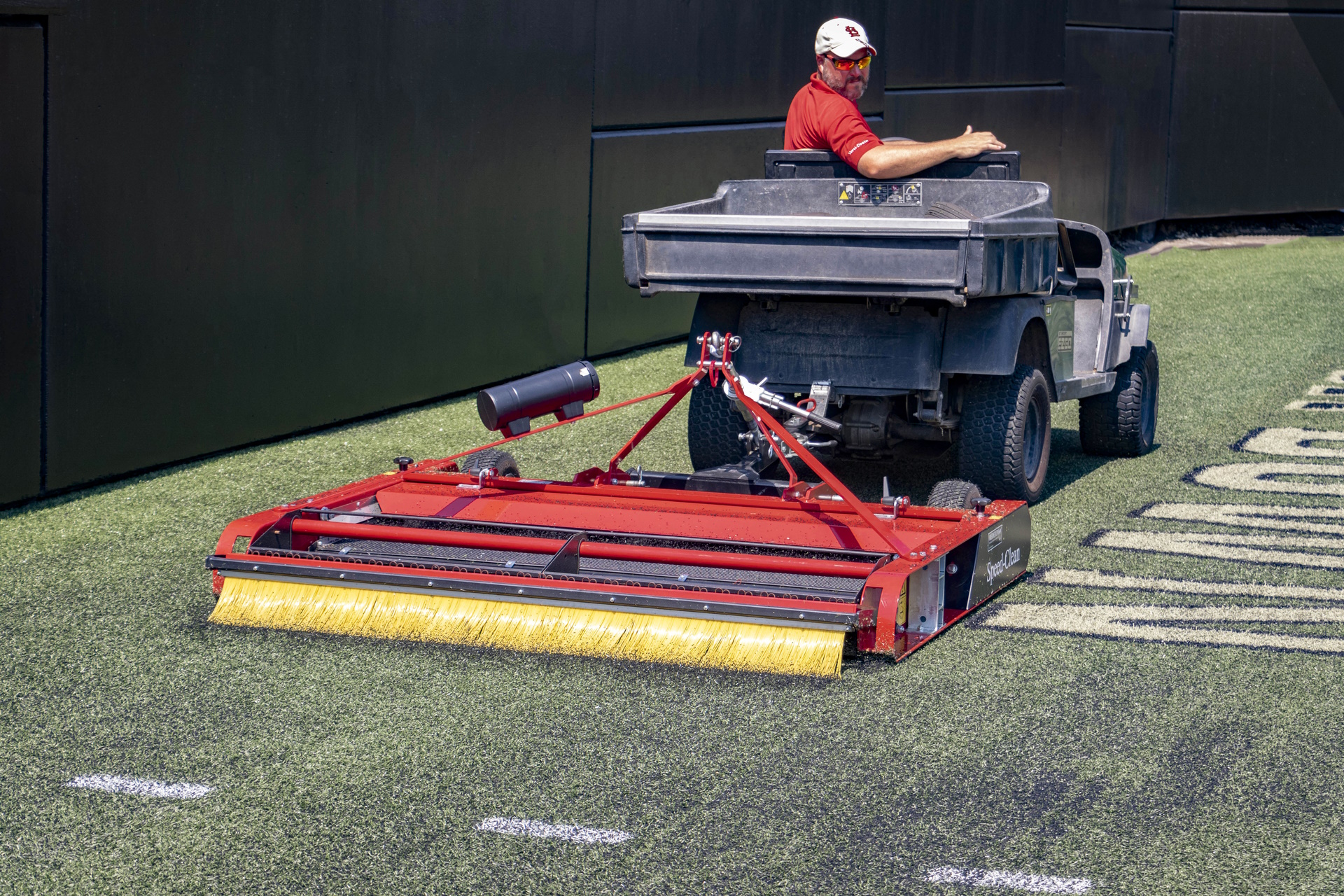
Synthetic turf, designed for sports and recreational areas, offers a durable, safe, and all-weather alternative to natural grass. It allows for increased playtime and reduced maintenance, providing a year-round green aesthetic regardless of climate. Unlike natural turf, synthetic fields can withstand heavy usage without rest. Although the low maintenance benefits of synthetic turf are strong, structural maintenance is imperative to keep the turf in top condition. Properly maintained turf will decrease the chance of athlete injury and improve playability.
Synthetic Turf Maintenance Maximises Your Turf’s Performance
The importance of synthetic turf maintenance is often overlooked. Proper maintenance will extend turf lifespan, improve performance, and reduce athlete injuries. With the misconception of “low maintenance,” the necessity for regular care to maintain optimal conditions is ignored. Introducing new regulations for infill materials to address health and environmental concerns further emphasizes the need for mechanical solutions. Redexim offers a comprehensive suite of equipment designed to meet these synthetic turf maintenance needs. Redexim equipment like the Verti-Top 1800, Speed-Clean 1700 and Combi-Groom and a wide assortment of brushes ensure synthetic turf remains a durable, high-performance, and safe playing surface for athletes.
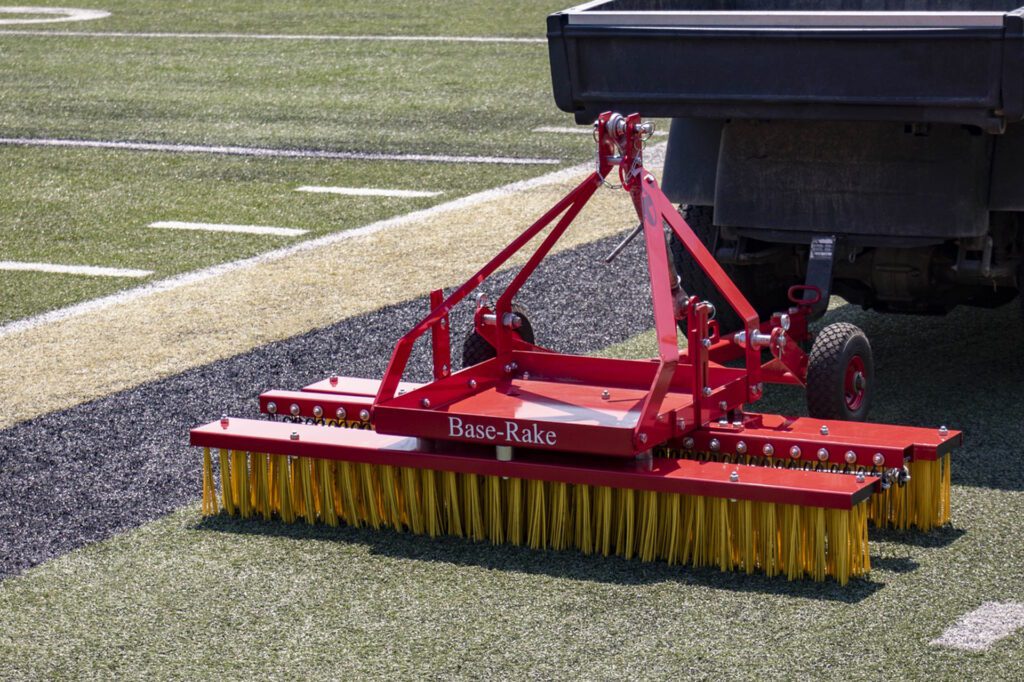
Brushing and Decompaction
Brushing and decompaction are essential synthetic turf maintenance practices for maintaining the longevity and performance of synthetic turf surfaces. Infill materials can become compacted over time and through normal use, resulting in a harder playing surface with increased risk for athletes. Decompaction helps to restore the turf’s natural resilience, enhancing safety and playability.
In addition to decompaction, brushing is recommended to keep turf fibers upright. Matting can make the turf fibers lay down and, in turn, create an inconsistent playing surface. Redexim’s synthetic turf equipment offers efficient solutions for both decompaction and brushing.
Synthetic Turf Cleaning
Regular cleaning of synthetic turf is part of a proper synthetic turf maintenance program. Accumulated debris and contaminants can compromise the safety and performance of the playing surface. Redexim’s advanced cleaning equipment is engineered to remove dirt, debris, and potentially harmful particles without harsh chemicals. The ultimate goal of clean synthetic turf is to ensure the playing surfaces are safe and healthy for athletes. The Redexim equipment works faster and more efficiently than the competition for quick turnaround of a synthetic turf surface.
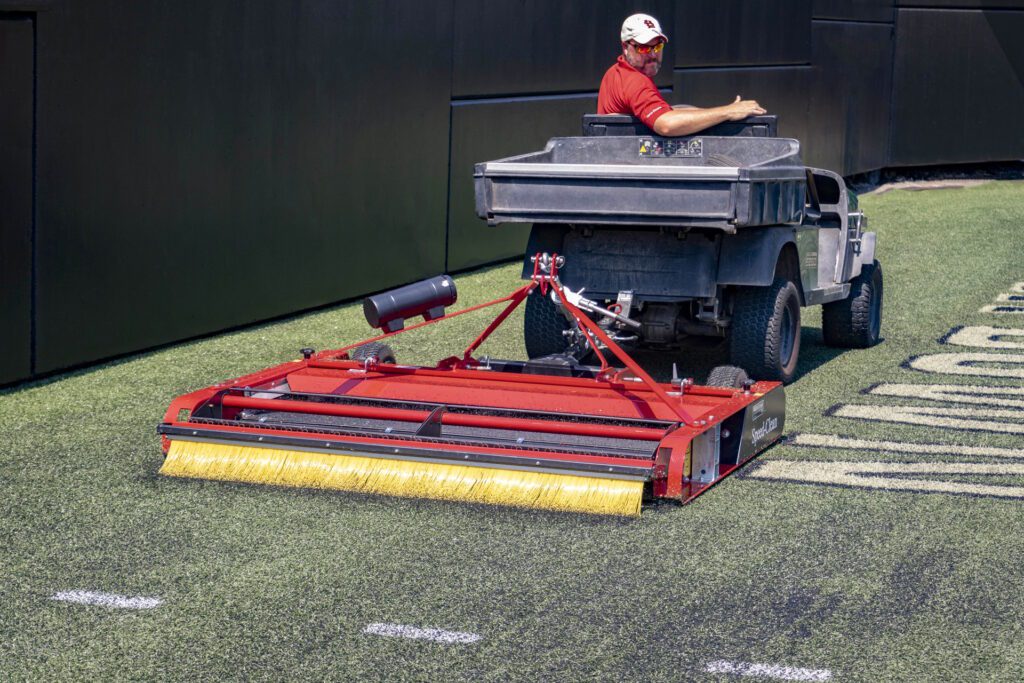
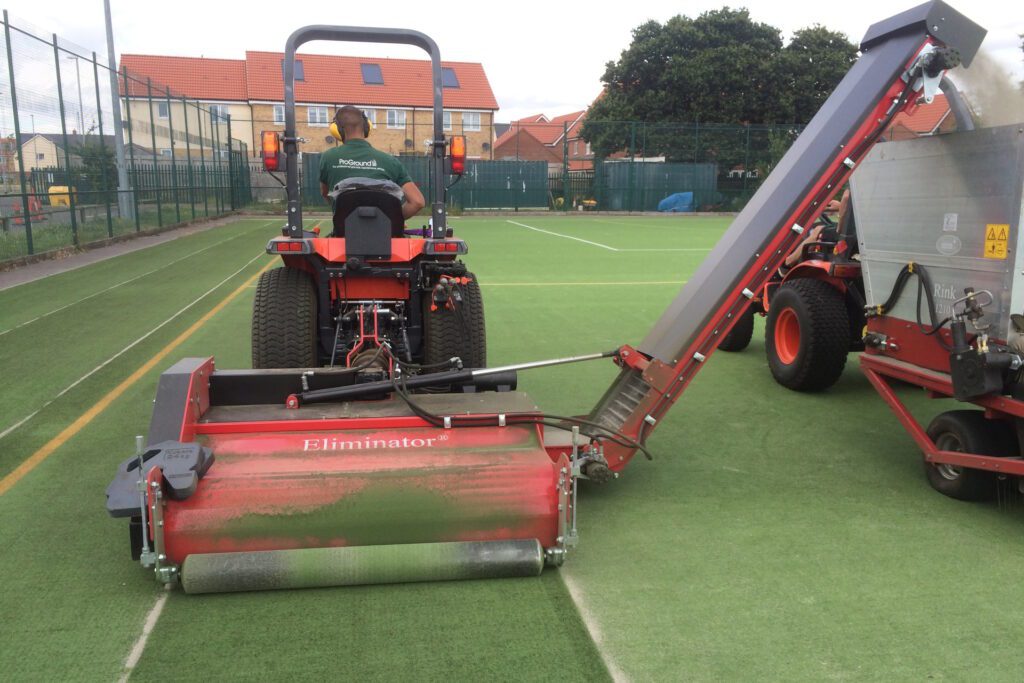
Synthetic Turf Renovation
Although not as common as daily maintenance, renovating synthetic turf is crucial for maximizing its lifespan and ensuring optimal performance. Turf fibers can become compacted, and infill materials can degrade as synthetic turf ages. Redexim offers specialized renovation equipment designed to rejuvenate synthetic fields by removing old infill, decompacting fibers, and evenly redistributing or replacing infill materials. Proper renovation procedures will ensure the playing field remains a safe, high-performing, and durable sports surface. To provide athletes with the best possible play conditions, use Redexim’s synthetic turf maintenance equipment.
Synthetic Turf Infilling and Refilling
Infilling and refilling are critical synthetic turf maintenance tasks for maintaining the performance and safety of synthetic turf fields. Proper infill levels ensure a lower risk of hard pitch, reduce player injuries, and extend the turf’s lifespan. In addition, performance on the field can be significantly reduced when infill levels are low or inconsistent. Redexim offers innovative equipment designed for efficient infilling and refilling.
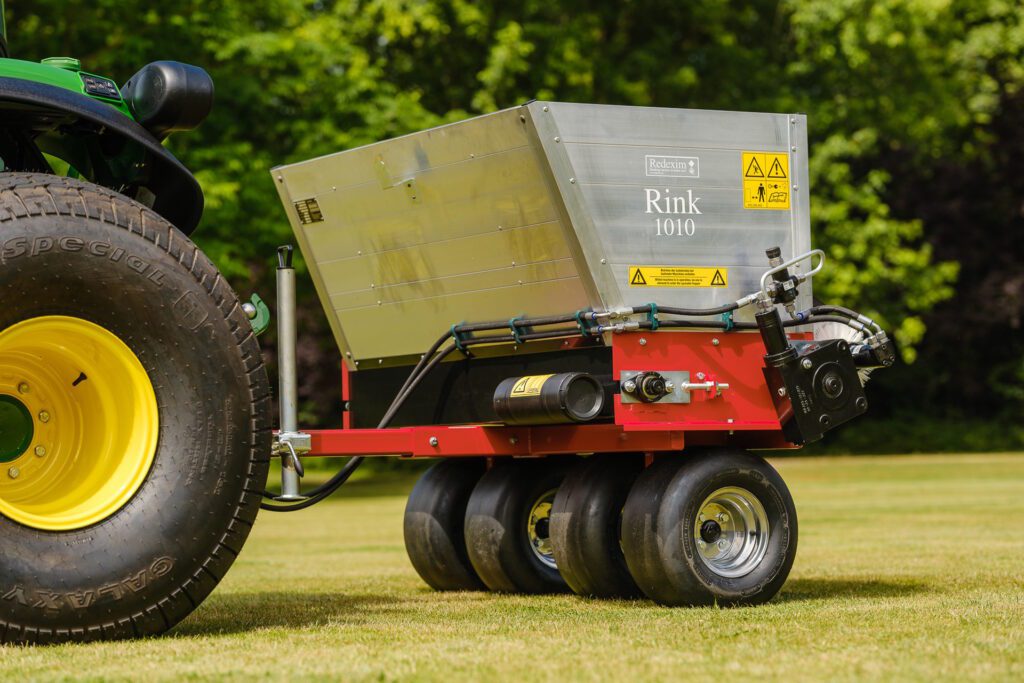
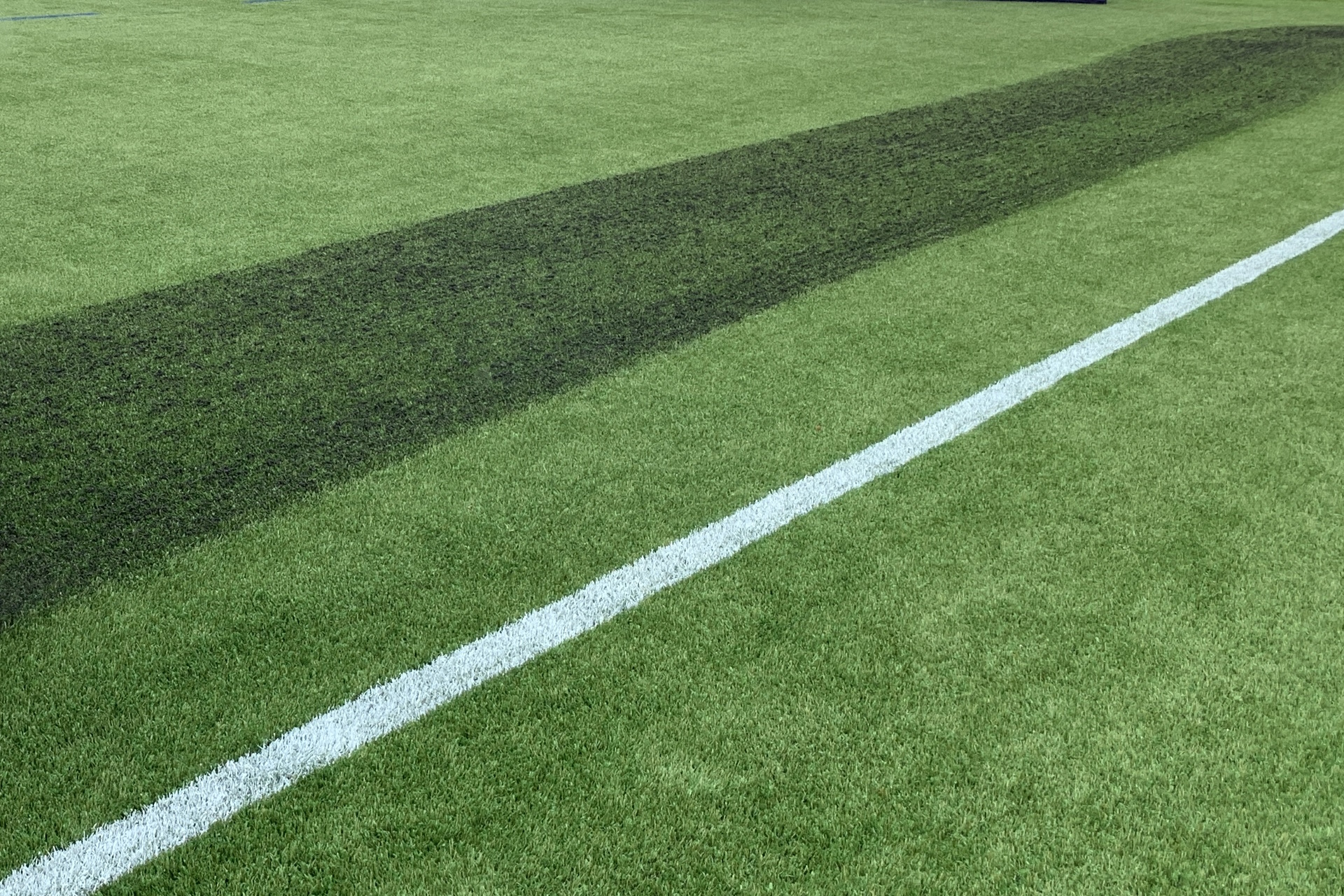
Frequently Asked Questions About Synthetic Turf Maintenance
What issues arise from not properly maintaining a synthetic field?
Neglecting maintenance on synthetic turf fields can lead to a multitude of issues including increased risk of athlete injuries due to a harder, compacted playing surface; higher likelihood of skin rashes, cuts, and infections from uneven and contaminated surfaces; accelerated wear and tear, reducing the field’s lifespan; pooling of water and unpleasant odors from poor drainage and debris accumulation; and the presence of microplastics and potentially hazardous chemicals due to the breakdown of infill materials. Regular maintenance is essential to ensure the turf remains a safe, durable, and high-performing sports surface.
Why is it important to maintain synthetic turf field for their lifespan?
Regular maintenance significantly extends the lifespan and enhances the performance of synthetic turf surfaces. It prevents matting, preserves aesthetic appeal, maintains shock absorption, and ensures player safety. Additionally, proactive synthetic turf maintenance addresses issues like weed growth and drainage problems, preserving the field’s integrity over time
What best practices in maintenance can prevent common issues associated with syntethic turd fields?
Best practices in synthetic turf maintenance include regular brushing to keep fibers upright and prevent matting; decompaction of infill to maintain a resilient and safe playing surface; timely infilling and refilling to ensure consistent playability and reduce injury risks; and thorough cleaning to remove debris, contaminants, and potential hazards. Additionally, periodic renovation is necessary to address wear and tear, rejuvenate the field’s performance, and adapt to new environmental and health standards with alternative infills. Following these practices ensures the turf remains a high-performing, durable, and safe playing surface for athletes.
What are the positive environmental impacts of synthetic turf maintenance?
Overall, synthetic turf maintenance promotes environmental sustainability by conserving water because of minimal or no need for watering, reducing chemical usage for fertilization or pest control, minimizing pollution due to a reduced need for fossil fuel-powered equipment, lowering carbon emissions, and preserving natural green spaces.
How do you assess the need for infill replenishment?
To assess the need for infill replenishment on a synthetic turf field, professionals utilise tools such as the Infill Thickness Tester. This specialised device provides a precise measurement of the infill depth, ensuring accurate evaluation of infill levels across the playing surface. Regular use of the Infill Thickness Tester enables maintenance teams to monitor infill levels effectively and identify areas that require replenishment. As infill naturally disperses over time due to usage and environmental factors, routine assessments with this tool help maintain optimal playing conditions and safety standards. Recommended intervals for refilling vary depending on factors such as field usage, climate, and infill type.
Lastest news
- The Speed-Clean for Efficient Synthetic Turf MaintenanceSynthetic Turf Maintenance undergoes a revolution with the utilisation of the Speed-Clean, boasting advanced and efficient functionality tailored specifically for…
